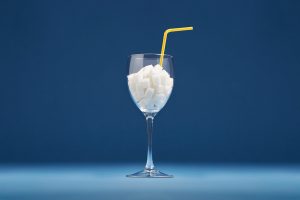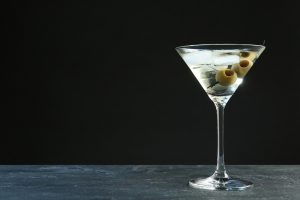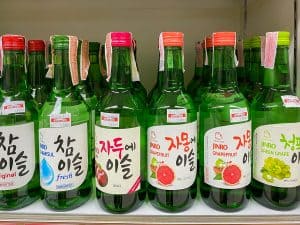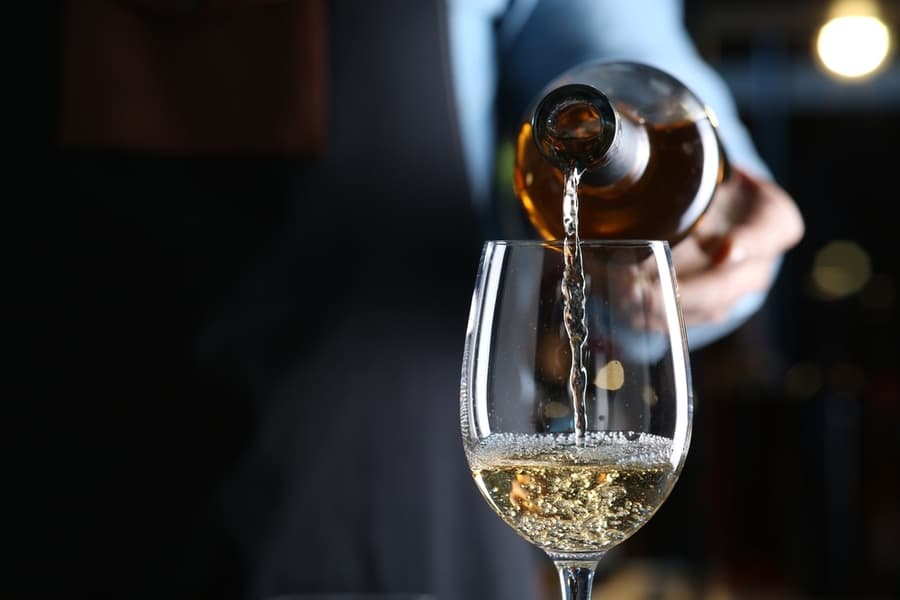
Chardonnay is one of the world’s most popular wines. Because the vines are easy to grow and adapt well to any climate, they are grown in the old world and new world on almost every continent.
Chardonnay is available in three styles, oak-aged, unoaked, and sparkling or Blanc de Blanc. Each one has its flavor profile which influences the type of food you’d serve with it.
Oaked chardonnay has a buttery taste and pairs best with cream-based dishes. In contrast, unoaked chardonnay must be paired with light meals without robust spices and additions. Blanc de Blanc pairs beautifully with salty and fried foods such as fried chicken and French fries. The best serving temperature is above 7ºC (44.6ºF), and the sweet spot is between 9ºC and 13ºC (48ºF–55ºF).
We’ll examine what chardonnay wine is and what the three styles are. We’ll also look at some basic rules and etiquette when serving and drinking chardonnay and food pairings that best complement the wine.
What Is Chardonnay?
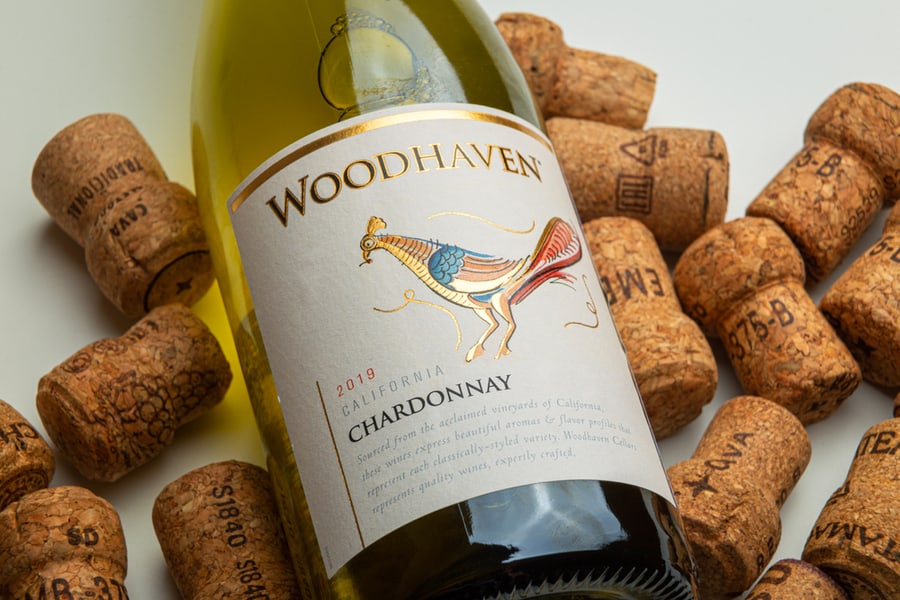
Chardonnay is a white wine made from the same-named green-skinned grape type. Chardonnay grapes were initially grown in the small town of Chardonnay, located in the Burgundy area of France, as a hybrid between the Pinot Noir and Gouais Blanc grape varieties.
Chardonnay lacks a particular scent or flavor but has a broad and structured palate. Instead, it represents where and how it is cultivated, which influences the chardonnay style you can expect to find in the wine shop.
Because chardonnay is like a blank canvas, it is a good representation of its environment and location—what wine connoisseurs call terroir.
It can taste tropical (pineapple, mango, and papaya) when grown in warmer areas due to higher sugar concentrations. But cooler temperatures mix the grape’s sharp acidity with orchard fruit flavors like peaches and apricots.
The winemaker’s ability to capture such expression without masking it with too much oak or other techniques is an actual test of their knowledge.
The Three Styles of Chardonnay
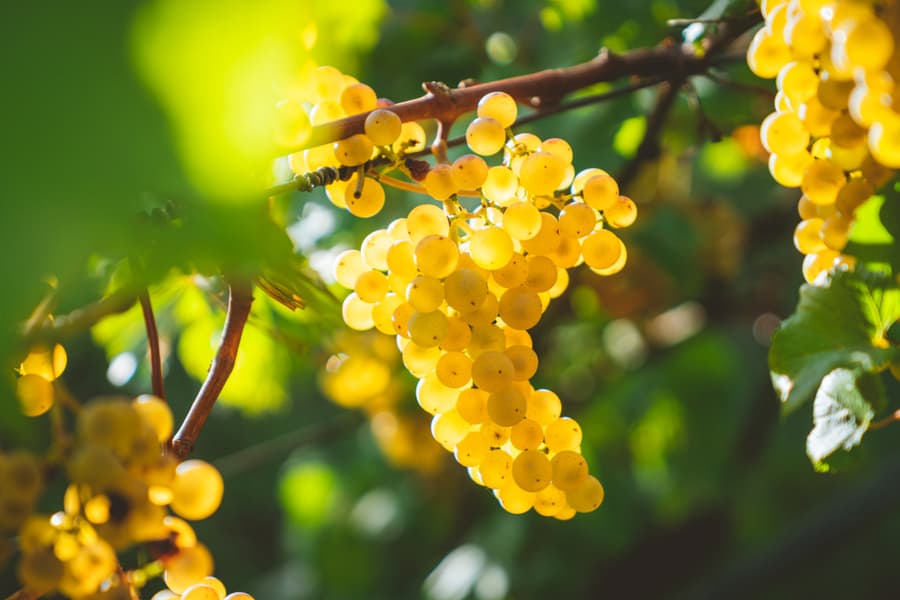
Chardonnay can be classified into three types, namely:
- Oak-aged chardonnay has a creamy taste
- Unoaked chardonnays usually have a citrusy or flowery taste
- Sparkling or Blanc de Blanc chardonnay—the ultimate expression of chardonnay grapes
Let’s explore how these wines are made and how they influence taste.
1. Oak Aged
When aging a chardonnay in oak, more oxygen is introduced to the wine. You’ll taste nutty flavors, baked apples, and pie crusts.
Newly toasted oak barrels can add aromatic compounds such as vanilla, coconut, and spice-like elements. The chardonnay undergoes the second type of fermentation, called malolactic fermentation.
You can look for tasting notes such as vanilla, butter, cream, butterscotch, or even crème brûlée, baked apple, and toasty oak.
2. Unoaked Chardonnay
We have the French region of Chablis to thank for this delightful style of chardonnay. It is also a fantastic option for making a Beurre Blanc Sauce.
This is the wine you’d choose if you prefer fruitier, floral, and citrusy tastes. You can expect to taste fresh pineapple and mango, green or yellow apples, white flowers, citrus peel, and pear.
This style does not rely on additional flavors from oak barrels and is considered more “varietally pure.” The wine is prepared in an environment where oxygen exposure is limited to preserve the wine’s acidity and freshness.
Winemakers make use of stainless steel fermenters to reduce oxygen exposure.
Taste descriptions such as fresh, lean, white flowers, mineral, and citrus blossom are usually giveaways that your wine is unoaked.
3. Blanc de Blanc or Sparkling Chardonnay
Chardonnay is one of the most popular and cornerstone wines when Champagne is produced.
To produce a Blanc de Blanc (“white of whites”) sparkling chardonnay wine, farmers will pick the grapes slightly earlier to preserve the high acidity in the grapes. The resulting wine is exceptionally tart and creates a blend or cuveé.
The blend will undergo a second fermentation in a champagne-style bottle. During the second fermentation, some factors will influence the outcome.
First, it depends on whether the initial (super tart) wine was produced in oak barrels or stainless steel fermenters. Second, the second fermentation, or tirage, will influence the taste profile—the longer it is aged, the more creamy and nutty flavors can develop.
You can expect toasted hazelnut and vanilla, honeycomb, Meyer lemon, or yellow apple (oak-aged) to leaner tastes associated with oxygen-reduced aging, such as lemon zest, lime, honeysuckle, and minerals.
How Do You Drink Chardonnay?

A good friend once asked, “how do you drink chardonnay?” My response was, “you don’t drink chardonnay; you savor every drop.”
Perhaps not the best answer in retrospect, but still a valid one. Drinking chardonnay comes with rules ranging from glassware to serving temperature and, of course, food pairings.
So, let’s delve into the ground rules (and etiquette) before looking at the food pairings.
Basic Chardonnay Rules and Etiquette
- Storing: Chardonnay should always be stored in a cool, dry place without direct natural or artificial light. The fridge is also a big no-no. Chardonnay also does not react well to heat sources. Keep your bottles horizontal to ensure the cork stays moist.
- Decanting: Some oak-aged varieties may benefit from decanting, but for the most part, chardonnay can be served directly from the bottle.
- Temperature: Never serve chardonnay ice cold. Chardonnay will not open the bouquet and taste flat. The best serving temperature is 7ºC (44.6ºF), and the sweet spot is between 9ºC and 13oC (48ºF); you could serve chardonnay straight from the cellar.
- Pouring: A good host will open the bottle at the table and hold the bottle by the body—never the neck or cork. Glasses should be filled between a third- and half-full in white wine glasses.
- Ice: Adding ice to a chardonnay will “kill” the bouquet and insult the host (and winemaker).
Chardonnay Food Pairings
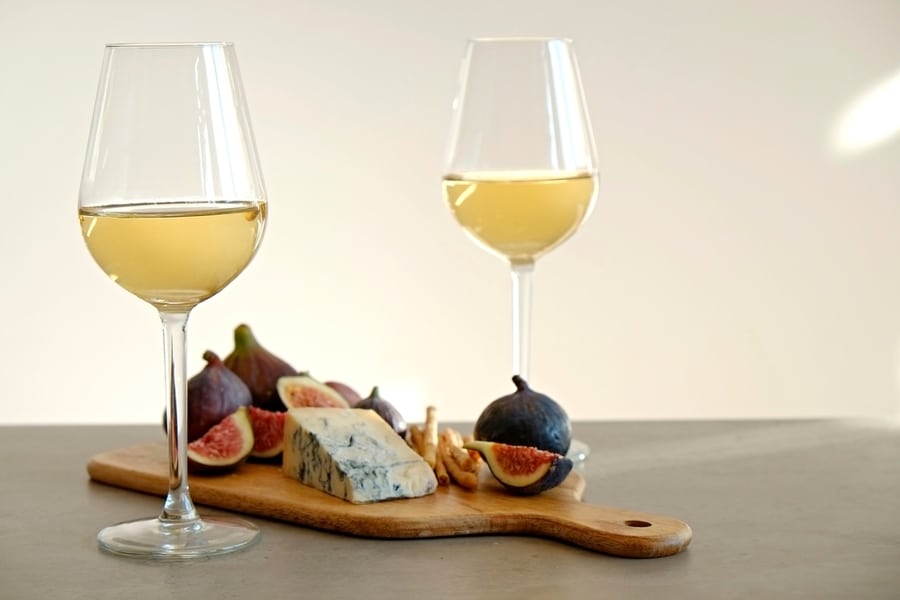
What is a meal without wine? Chardonnay is a versatile wine that can be served as an aperitif before a meal, at an informal gathering or picnic, or during formal occasions.
The style of chardonnay will have a decided effect on the type of meal you’d serve and vice versa.
1. Oaked Chardonnay
Creamy dishes such as mushroom risotto, lobster bisque, or leek and ham pie will compliment the buttery taste of oaked chardonnay.
Starchy vegetables such as squash, corn, pumpkin, and mushrooms are fabulous vegetarian pairings. Don’t forget about creamy cheeses such as Brie.
2. Unoaked Chardonnay
The slight taste profile of unoaked chardonnay pairs well with raw seafood such as sushi and oysters.
Fresh, light and flaky fish is another excellent option—lighter-tasting meals such as vegetable risotto, Moules et Frites (mussels and French fries).
3. Blanc de Blanc
Slaty fried dishes and Blanc de Blanc chardonnay go hand in hand. Your imagination is your only limit but think along the lines of calamari, French fries, and fried chicken.
Conclusion
Chardonnay is often dubbed “the winemaker’s grape” due to its versatility to grow anywhere in the world.
Although it is not an aromatic grape variety, it instead reflects the terroir of the region where it is produced—this allows chardonnay to express a wide variety of tastes ranging from buttery to lean, mineral-like and citrussy to sweet with hints of tropical fruits such as pineapple, mango, and pineapple.
Remember, chardonnay should be served chilled, in white wine glasses, but never ice cold.



